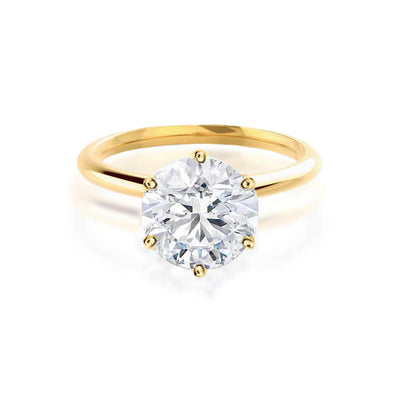Engagement rings have long been a symbol of love and commitment, evolving over centuries to reflect cultural traditions, social values, and fashion trends. From ancient practices to modern-day proposals, the engagement ring has undergone significant transformations in materials, styles, and meanings. This article explores how engagement rings have evolved over time and what has influenced their ever-changing designs.
Ancient Origins
The tradition of giving engagement rings such as rings by Lily Arkwright dates back thousands of years. The ancient Egyptians are believed to have been among the first to use rings as a symbol of eternal love, crafting simple bands from materials like braided reeds and hemp. Rings were often worn on the fourth finger of the left hand, a practice still followed today, based on the belief that this finger contained the “vena amoris,” or “vein of love,” which was thought to be directly connected to the heart.
In ancient Rome, engagement rings took on a more formalized meaning. Roman men would present rings made of iron, signifying strength and permanence. Over time, these evolved into gold rings, which demonstrated the wealth and status of the giver. Rings were often engraved with personal inscriptions and became legally binding symbols of betrothal.
Medieval and Renaissance Influences
During the medieval and Renaissance periods, engagement rings became more elaborate. The use of gemstones became common, with rubies symbolizing passion, sapphires representing fidelity, and diamonds signifying indestructibility. One of the earliest recorded diamond engagement rings was given by Archduke Maximilian of Austria to Mary of Burgundy in 1477, setting a trend among European aristocracy.
Poetry and symbolism also played a significant role in ring designs. “Posy rings,” which featured engraved romantic verses or mottos, became popular in the Middle Ages. Rings were crafted with intricate designs, often featuring intertwined hands (known as “fede rings”), and some were even designed to open and reveal hidden messages or compartments.
The Rise of Diamond Rings in the Victorian and Edwardian Eras
The Victorian era (1837–1901) saw engagement rings become more ornate, often featuring a combination of diamonds and colorful gemstones set in gold. Queen Victoria’s love for jewelry greatly influenced the trends of the time, leading to designs that incorporated floral motifs, hearts, and bows.
During the Edwardian era (1901–1910), engagement rings became even more delicate and intricate. Platinum became a preferred metal due to its strength and malleability, allowing for detailed filigree work. Diamonds remained popular, often set in lace-like designs that reflected the romanticism of the period.
The 20th Century and the Influence of De Beers
The most significant shift in engagement ring trends occurred in the 20th century, particularly with the rise of diamond rings as the standard choice. In 1947, De Beers launched its famous advertising campaign with the slogan “A Diamond Is Forever,” cementing the diamond engagement ring as a cultural necessity. This marketing strategy led to a surge in diamond sales, making them the gemstone of choice for engagements worldwide.
By the mid-20th century, solitaire diamond rings became the quintessential engagement ring style. The round brilliant cut, introduced by Marcel Tolkowsky in 1919, gained immense popularity for its ability to maximize a diamond’s brilliance and sparkle. White gold and platinum were favored metals, reflecting modern tastes and durability.
Modern Trends and Customization
In recent decades, engagement rings have evolved to reflect personal styles and ethical considerations. While classic diamond solitaires remain popular, there has been a growing interest in alternative gemstones such as sapphires, emeralds, and even non-traditional stones like moissanite and morganite.
Customization has become a significant trend, with couples opting for unique designs that incorporate vintage elements, unconventional settings, and mixed metals. Lab-grown diamonds have also gained traction as an ethical and sustainable alternative to mined diamonds.
Additionally, social changes have influenced engagement ring choices. Gender-neutral and men’s engagement rings have become more common, reflecting a shift toward inclusivity and diverse relationship dynamics. Minimalist designs, stackable rings, and heirloom-inspired pieces have also become popular choices for modern couples.
Conclusion
The evolution of engagement rings mirrors the changes in society, culture, and personal expression. From simple bands of ancient times to the dazzling diamonds of today, engagement rings continue to be a meaningful symbol of love and commitment. As trends continue to evolve, one thing remains constant: the enduring significance of the engagement ring in celebrating a lifetime of love.

